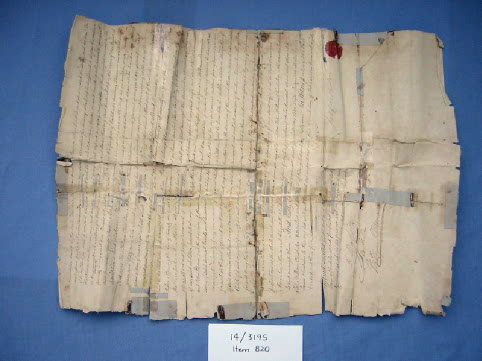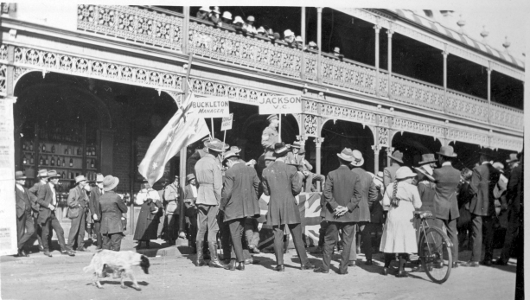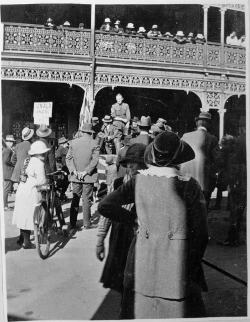This is the first of a planned series of posts providing handy conservation tips.
Preserving State Records Collection
Many State archives have been badly damaged during their lifetime. The damage may have been caused by poor storage practices, unfortunate disasters, or bad handling in the past.

Torn document being prepared for treatment
State Records refers to these archives as being “Too fragile to issue” and these archives cannot be accessed either by staff or readers until they have been treated by the Conservation team.
State Records website
More details on the State Records website about conservation and preservation:
Preservation series
We are planning to post a series of articles relating to conservation and preservation treatments of State archives. Please contact us if you would like to participate in this series and demonstrate what practices you are undertaking to preserve your archival collection.
Using shadows to date photographs
This is a guest post from William Oates, University Archivist, Heritage Centre University of New England.
The team at the University of New England (UNE) and Regional Archives has been trialling dating some of the photographs in their collection using the shadows cast by the sun. The two photos in this post are from a series of 29 photograph albums created by the White sisters of ‘Saumarez’ Homestead near Armidale. Donated by the family to the regional archives at UNE, these images capture aspects of the late Victorian and Edwardian rural lifestyle enjoyed by the White family.
The photographs in question portray scenes from a recruitment rally in the streets of Armidale during World War One. One precise method for dating of the event could have been obtained by reviewing newspaper articles during the war years. Instead, dating methodology using the shadows cast by the sun on a given map reference was tested by a volunteer at the UNE & Regional Archives.
The location of the photo was easily identified from the hotel in the background. A shadow of identifiable length was found in one picture and from this a number of possible dates generated from the available algorithm. Once this date was calculated, we then searched the newspapers to locate the story.
On the 11th August 1917, a recruiting team for the Australian Imperial Forces was invited to a series of functions in Armidale according to the Armidale Chronicle. This team included Victoria Cross winner Billy Jackson who lost his hand in action in France in 1916. The moment captured by one of the White girls clearly shows the recruiting team with Jackson in attendance.
Using shadows to date photographs (part 2)
William Oates
(Photographs courtesy of: University of New England and Regional Archives – (A1473) White Family Photographs – Album 4. Please contact for further information)
What is ‘distributed management’?
Distributed management is a strategy under which a public office, or other person, can enter into an agreement with State Records to have possession or custody of State archives.
Our new blog
Hi and welcome to Archives Outside: A meeting place for people who manage archival collections around New South Wales. State archives are stored, not only at the State Records Authority of New South Wales, but in regional centres around the state. This is called ‘distributed management’ of State archives, or in other words, management of State archvies outside of its custody.


